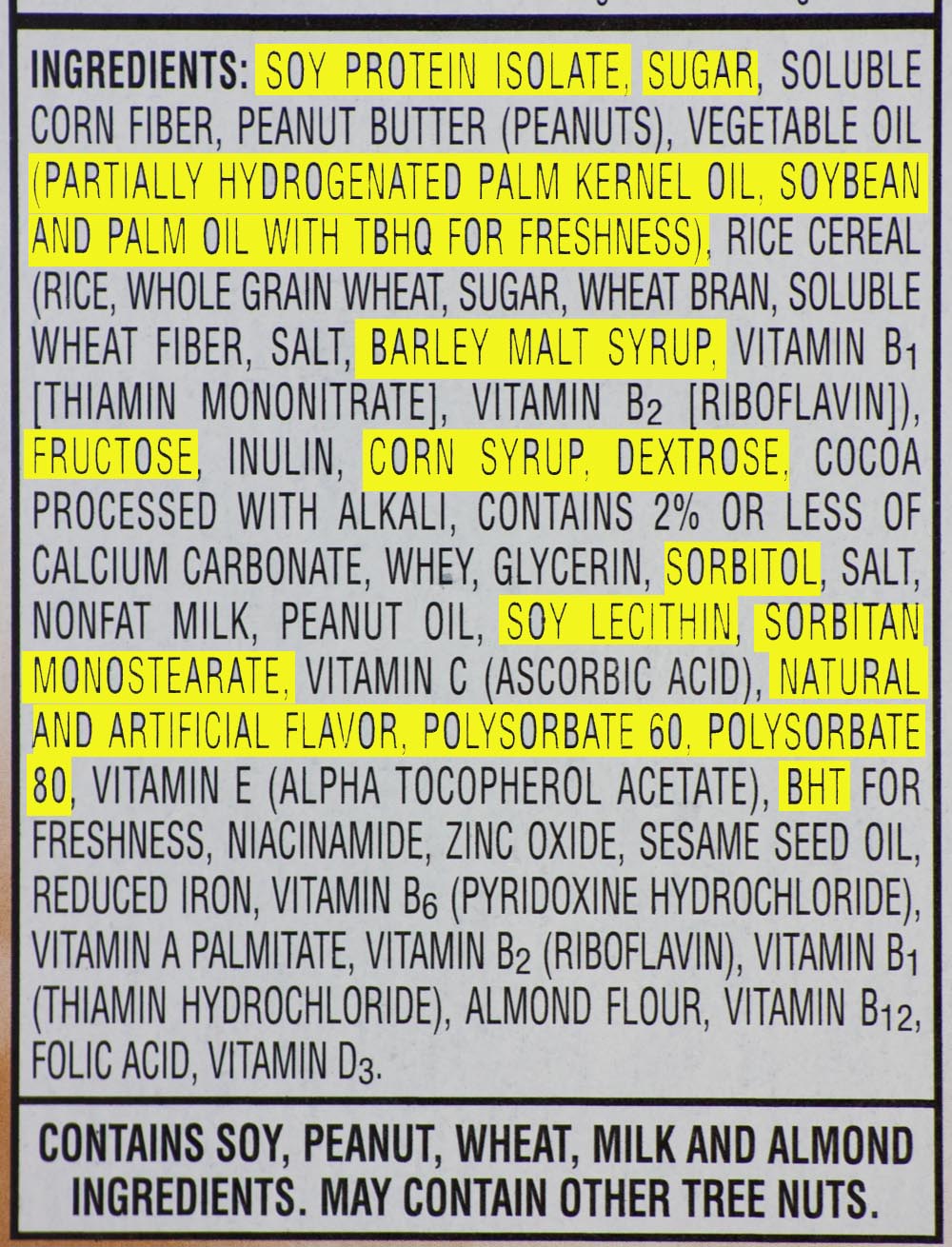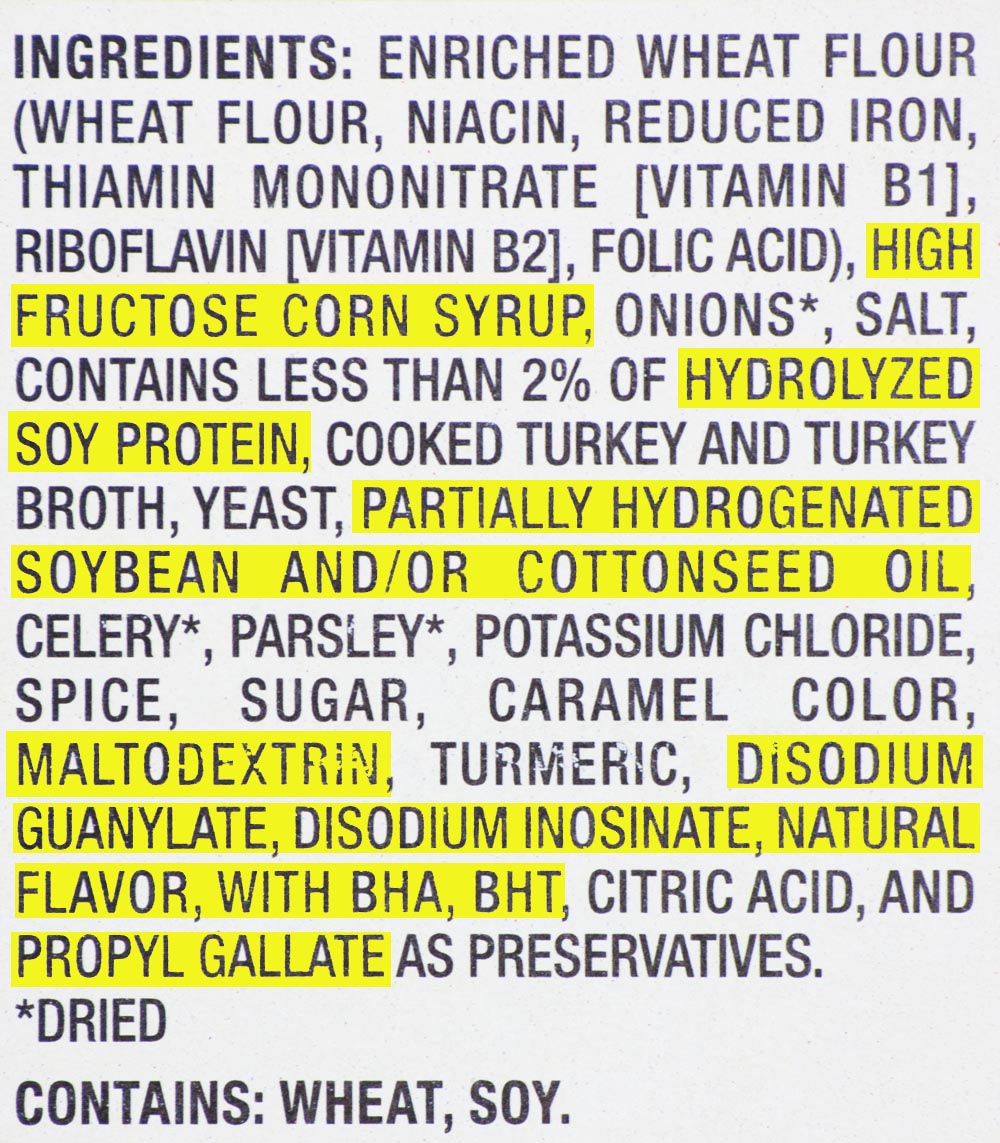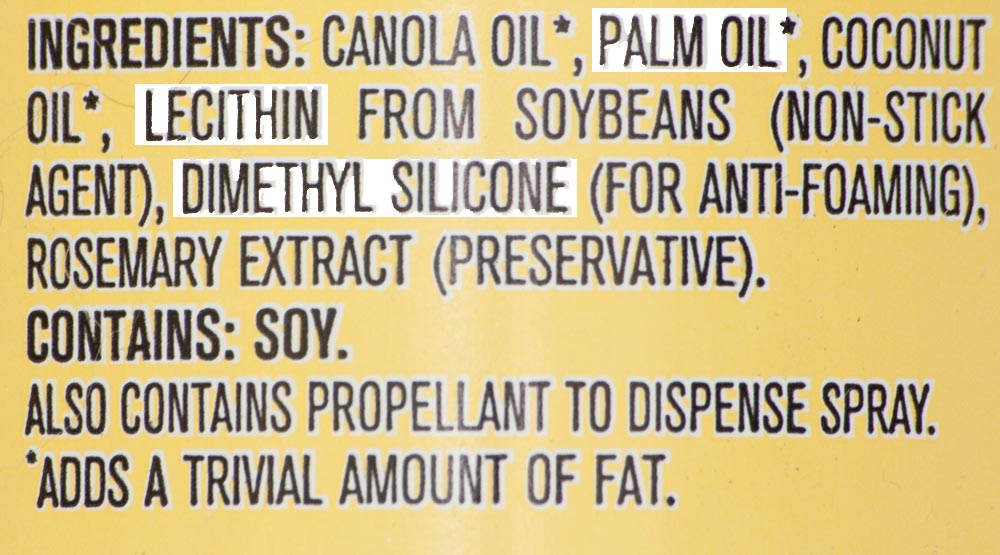Don’t eat this
Don’t eat this. You don’t know what it is. You don’t know why it is in your food. You don’t know if it is safe. So why in the world would you eat it?
Ask yourself, “If I was making stuffing to go with a chicken, would I be adding these ingredients?” Ask yourself if you have ever seen these ingredients for sale on a store shelf. Have you ever seen them listed on a recipe in any cookbook?
Search on-line for who sells these food additives. The answer is companies that manufacture chemicals. Or large food corporations that have their own chemical manufacturing departments.
These additives come from chemical companies because they are not normally found in nature. Or they are found only in tiny amounts under special conditions. Don’t eat this because it is not really food.

This is the ingredients label for “protein meal bars.” Don’t eat this because it is not really food.
But are they safe?
Nearly all food additives fall under the designation “GRAS,” or “generally regarded as safe.” GRAS doesn’t really mean very much. Maybe the chemical was fed to rats or mice for ninety days without causing obvious major health problems. Or maybe no studies were done at all.
Because a company can simply send a notice to the FDA stating they feel the chemical is safe for food use. And then start adding it to our food. It is all perfectly legal. And the FDA will allow that chemical to be used until people start to die. Headaches, stomach problems, diarrhea, or rashes are not enough to stop its use.
So don’t eat this. Many food additives and sweeteners are closely associated with side effects, just like prescription drugs. Because they are man-made chemicals. They really are not food.

Ingredients for a packet of meatloaf flavoring – just add meat! Is this food? Don’t eat this; it has sand in it.
Why are they used?
If you read the literature, corporations add these ingredients to make our food “better.” What they really mean is they add these ingredients because it makes us buy more. Or they use these ingredients because it saves them money and increases profits. Or shelf life is greatly extended.
“Dough conditioners” make stronger gluten networks or cause a more uniform texture or make the dough easier to form or rise faster. “Emulsifiers” keep mixtures of fats and liquids from separating and settling. “Anti-caking agents” keeps powders and granular products from clumping. “Hydrogenated oils” become solid and shelf-stable at room temperature and are also known as trans-fats. “Sugar alcohols” taste sweeter than table sugar and can usually not be digested, so they have no calories. Some “preservatives” stop the growth of yeasts, fungi and bacteria, preventing spoilage. Other preservatives are antioxidants, keeping fats from going rancid. Hydrolyzing and autolyzing produce better textures for shelf-stable dry products.
“Flavors” and “flavoring” can be almost anything, whether “natural” or “artificial.” Food corporations do not have to tell us what they are on the label because so little is used. Sand, or silicon dioxide, is used in many processed foods from table salt to meatloaf flavoring packets to prevent lumps. The same dimethyl silicone that keeps hydraulic fluid from frothing helps tame aerosol baking sprays. Propyl gallate prevents oils and fats from going rancid but is also an estrogen antagonist. BHA, BHT, TBHQ and other antioxidant preservatives are also suspected human carcinogens. So don’t eat this; it is not really food.

Does tomato soup really need a sweetener known to accelerate the onset of diabetes, unknown flavors and plant fertilizer? If it is not really food, don’t eat this.
When do I tell myself “don’t eat this”?
My decisions on eating any ingredients are based on the “home-made” test. If I was making this food at home, would I add this ingredient? If I would not add the ingredient, I say “don’t eat this.”
I do not want sand in my salt or spices and will tolerate a little clumping when the humidity is high. It is not “great” or “amazing” that some pastries last months at room temperature, but weird and scary. It seems bizarre to me to walk into a store and see boxes of bacon at room temperature with a 6-month expiration date. Sometimes these manipulations of our food are so strange I don’t even want to know how they are achieved. I just know it is wrong and it is not going anywhere near my mouth.
If food has an ingredients list, I am much less likely to buy it. Real food does not need a package or an ingredients list. And if there is only one ingredient, there are no additives to worry about.
I believe in whole food health. I believe in eating a healthy whole food diet. The only people I disappoint this way are my doctor and dentist.
Why should I pay a premium for “meal bars” with four different types of added sugars, trans-fats, artificial flavors and artificial preservatives? I will have a bowl of oatmeal with cinnamon, honey, nuts and raisins instead. Same approximate nutrient value with fewer calories at a quarter of the price. Problem solved.


